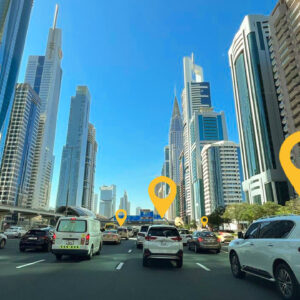Traveling between major cities has become a common part of modern life. Whether you are a professional commuting for work, a student traveling for education, or a family exploring nearby destinations, intercity travel is more relevant than ever. The challenge for most people, however, is finding ways to keep these trips cost-effective without sacrificing comfort or safety.
This guide explores practical strategies for making city-to-city travel affordable. We will look at different transport options, budgeting techniques, and small lifestyle adjustments that can save you money while ensuring your journey remains smooth and enjoyable.
Understanding the Costs of Intercity Travel
Before cutting costs, it’s important to understand what makes travel between cities expensive in the first place. Some of the most common factors include:
-
Fuel and Toll Fees – If you drive your own car, the costs can add up quickly with rising fuel prices and tolls.
-
Maintenance – Long trips put more strain on your vehicle, which translates into higher servicing expenses.
-
Public Transport Pricing – While buses and trains are usually cheaper, premium or last-minute tickets can be surprisingly expensive.
-
Hidden Expenses – Snacks, stopovers, parking, and even small purchases during trips add to the total cost.
Recognizing these cost drivers helps you make smarter choices about which travel methods to prioritize.
Choosing the Right Mode of Transport
Not all journeys are the same, and the right option depends on your budget, schedule, and personal preference. Here are some of the most common and affordable ways to travel between cities:
1. Public Buses
Buses are often the cheapest way to travel between cities. They offer predictable schedules, a wide range of departure times, and budget-friendly tickets. However, the trade-off is less comfort and longer travel times compared to private cars.
2. Shared Cars
Carpooling has become increasingly popular. Sharing a ride with others reduces costs significantly while also offering the comfort of a personal vehicle. For many daily commuters, this strikes the perfect balance between affordability and convenience.
3. Trains
In regions where trains are available, they can provide a reliable and affordable option. Advance bookings often unlock discounted fares, making this a cost-effective choice.
4. Ride-Sharing Services
Technology has made intercity ride-sharing easier. Platforms and services now connect travelers heading in the same direction, which cuts down costs and provides door-to-door convenience. For example, many professionals rely on Car lift Dubai to Abu Dhabi service to manage daily commuting without overspending.
5. Cycling or Scooters (for shorter distances)
While not practical for every city pair, eco-friendly options like cycling or e-scooters are increasingly used for short intercity connections, especially in areas with strong infrastructure.
How to Save More on Tickets and Rides
Even within the same travel option, there are ways to pay less. Here are some tested strategies:
-
Book in Advance – Trains, buses, and even car-sharing apps often offer lower prices if you reserve early.
-
Travel Off-Peak – Tickets during rush hours or weekends are usually more expensive. Traveling mid-day or mid-week often saves money.
-
Look for Passes and Subscriptions – Frequent travelers may benefit from monthly or weekly passes.
-
Use Apps to Compare Prices – Digital tools allow you to see the best deals across multiple transport providers.
Packing Smart to Avoid Extra Costs
It might not seem like much, but packing wisely can reduce your travel budget. For example:
-
Bring your own snacks and water instead of buying overpriced food along the way.
-
Carry a portable charger so you don’t need to purchase emergency charging services.
-
Use compact luggage to avoid excess baggage fees, especially when using trains or buses that enforce weight limits.
Comfort Without Breaking the Bank
Affordable doesn’t mean uncomfortable. With a few tricks, you can keep your travel experience enjoyable without adding expenses:
-
Neck Pillow and Blanket – Instead of paying for premium seats, simple accessories can make regular seats much more comfortable.
-
Noise-Canceling Earphones – Block distractions and make your trip more relaxing.
-
Offline Entertainment – Download shows, podcasts, or books ahead of time to avoid paying for onboard Wi-Fi or data usage.
Safety and Reliability on a Budget
Cutting costs should never mean compromising safety. Here’s how to balance both:
-
Check Service Reviews – Whether it’s a bus operator or a ride-share provider, research reviews before booking.
-
Travel with Reputable Providers – Prioritize companies with strong safety records.
-
Emergency Planning – Carry basic first-aid items and know alternative routes or backup travel options.
Sustainable Travel: Save Money and the Planet
Affordable travel often aligns with eco-friendly practices. Here are a few ways to combine both goals:
-
Carpooling and Ride-Sharing – Fewer vehicles mean lower costs and reduced carbon emissions.
-
Bus and Train Travel – Mass transit options consume less energy per passenger.
-
Pack Light – The less weight, the lower the energy consumption in vehicles.
By making sustainable choices, you can reduce expenses while contributing positively to the environment.
Lifestyle Adjustments to Reduce Travel Stress
Intercity travel can feel overwhelming if it’s part of your daily or weekly routine. Simple lifestyle habits can help:
-
Plan Your Week in Advance – Bundle errands and meetings so you don’t make unnecessary trips.
-
Use Commute Time Productively – Read, study, or listen to audiobooks. This way, the trip feels less like wasted time.
-
Create a Travel Kit – Keep essentials like chargers, snacks, and documents ready so you don’t forget things and have to buy replacements.
When to Spend More (and Why It’s Worth It)
While saving money is the main goal, sometimes spending a little extra is the smarter long-term choice. Consider upgrading when:
-
The cheaper option risks significant delays.
-
Safety records of a service are questionable.
-
You need to maintain energy and focus for work right after the trip.
-
The journey length is long enough that comfort becomes a priority.
Think of these as investments rather than expenses.
Final Thoughts
Affordable city-to-city travel is achievable with the right mix of planning, awareness, and smart choices. By selecting suitable transport options, booking strategically, packing efficiently, and prioritizing safety, you can cut costs while still enjoying a reliable and comfortable journey.
Whether you’re a professional commuting daily, a tourist exploring nearby destinations, or a student traveling for education, these strategies can help make your trips smoother and lighter on your wallet.
Saving money doesn’t mean sacrificing quality. It simply means traveling smarter. And with a little consistency, affordable intercity travel can become not just an occasional achievement, but a regular way of life.




